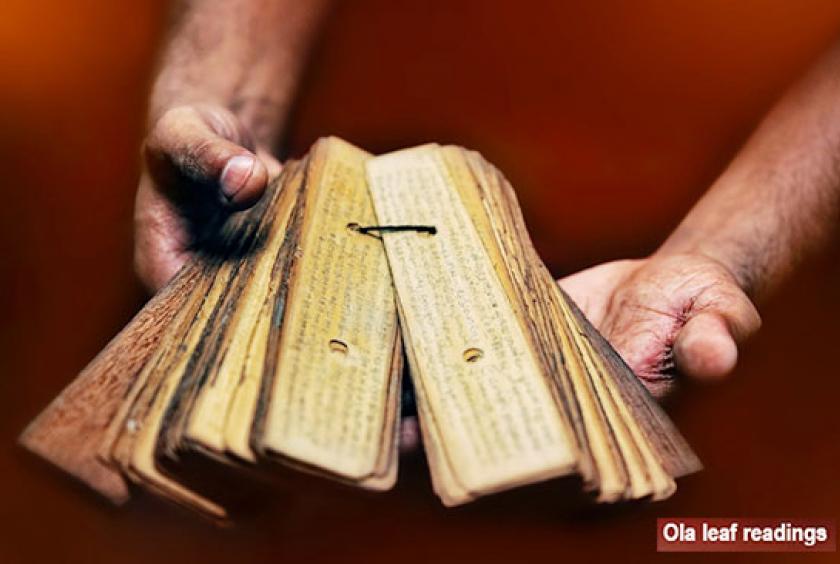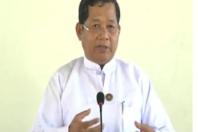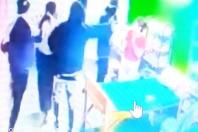The Island / ANN
A non-scientist studies Nature but with determinants of diverse sorts, personal prejudices, religious beliefs or even illiteracy. A scientist explores and quantifies natural phenomena; these contrast with other natural phenomena that are esoteric and non-quantifiable. Attempts have been made by those interested in paranormal phenomena to delve into this difficult area; I, though a medical academic, wrote a chapter in the book Yoga and Para[sychology (Ed. Prof. K. Ramakrishna Rao, India) titled Approaches to the study of re-incarnation. My aim here is to use a scientific approach to study a phenomenon, outside the pale of conventional science, which has been documented in writings for centuries.
I would appeal to readers in trying to understand what I will be saying, to decondition your mind if that is at all possible, from skeptical views and consider what I will say with an open mind. I must say that I have been working on scientific research for 50 years with an equally strong interest in paranormal phenomena. A scientist spends his life investigating Nature but it seemed necessary for me to go a step further and investigate the unknown features of Nature, i.e. paranormal phenomena. The paranormal is a great challenge to a scientist.
This essay has two apparently contrasting themes: modern science with its rigorous objective methods on the one hand versus a mysterious, qualitative set of phenomena that lie in the area of philosophy and the Humanities on the other. It is an example of C. P. Snow’s famous debate, The Two Cultures, with a gulf separating them at the present time.
Modern science with its methods for the systematic investigation of Nature is first discussed emphasizing its inherent characteristics of concepts and ideas – replicability, inter-subjective testability, objectivity, quantifiability, and falsifiability – to which one might add conformity with established scientific paradigms. These features give small incremental advances in scientific knowledge in what Thomas Kuhn called “Normal Science”, which was occasionally complemented by paradigmatic jumps that Kuhn called “Revolutionary Science”, as when Newtonian mechanics gave way to Quantum Mechanics. The absence of this feature of established paradigms has been regarded as a negative feature of paranormal phenomena that include the ancient Indian palm leaf horoscopes. With the difficulty of accommodating them within science’s established paradigms, they do not enter into the mainstream of modern science and thus suffers the indignity of being dismissed as mumbo-jumbo, even by scientists such as Richard Dawkins, without evidence of their personal experiences of obscure paranormal phenomena. This situation contrasts with my best example, Professor, Nobel Prize winner Brian Josephson the physicist with whom I corresponded. He was interviewed by BBC London on his turn from physics to studying the paranormal. Josephson said he witnessed Mathew Manning in Toronto, Canada at a conference on Psychokinesis, bending metal objects mentally; Josephson then realized that science has nothing to say about such phenomena in Nature. His interview is on the Internet, BBC.
The Indian palm leaf phenomenon is next illustrated with instances that however exemplify some features that conform with some characteristics of modern science such as replicability, amenability to quantitative treatment, and the idea of causality. It differs from the substance of modern science in the absence of nomothetic theories that could explain these phenomena, and in the difficulty of classifying them into the established areas of modern science. Nor can they be subjected to Karl Popper’s idea of falsification rather than of verification of the validity of a theory which is regarded as a useful criterion of the process of scientific advance.
This quandary emphasizes the limitations of modern science on the one hand to cope with obscure natural phenomena that have been repeatedly validated, with what may on the other hand, be considered phenomena that are as replicable as heat, light, sound, electricity and magnetism which are the substance of modern physics, but which are as yet difficult or impossible to include in the ambit of modern science.
The ola leaf phenomenon is a subject on the other side of the Two Culture divide that separates the mysterious phenomena from domains of scientific knowledge and experience. The accuracy of documented past events is incredible with information that was not disclosed earlier to the reader such as the client’s name, names of his family members and events in the client’s life and even when the client would get his reading. The leaf reader’s statements are not verbatim but are read off words written on the leaf as confirmed by an observer who was conversant with the leaf’s written language – Tamil. A leaf is selected for reading, on the basis of the client’s thumb print as a sort of Index Number or Accession Number in a library book. It also correlates the client’s present life’s events with those of his previous life in terms of the idea of Karma.
In addition, the palm leaf phenomenon challenges our extant ideas of the past, present and future that Albert Einstein and Arthur Eddington considered as delusions. This phenomenon deals with ideas in philosophy that have no place in modern science but which have repeatedly demonstrated validity in terms of replicability as in the vein of modern science; these include re-incarnation and the idea of karma. While the leaf’s recital of the past events is stunningly accurate, the future’s accuracy was variable from 11 to 32 years in this author’s experience, illustrating the behavior off subatomic particles, according to Austrian Nobel Prize winner Erwin Shroedinger’s theory of probabilities concerning the behaviour of subatomic particles, that states that only one of these probabilities is realized when the particle is observed. He used mathematical models to describe the likelihood of finding an electron in a certain position. This atomic model is known as the Quantum Mechanical Model of the atom.
It was pointed out by Johannes Muller, the German physiologist that natural phenomena are of two kinds, those that are amenable to methods of critical, quantitative inquiry which are required to provide rigid proof as in the modern hard sciences, and from others that have only accumulated probabilities that include horoscopes and paranormal phenomena, for their consideration or even validation.
For the present, in terms of the limitations of our knowledge, C. P. Snow’s contrasting and irreconcilable Two Cultures, illustrated by modern physics on the one hand, and the ancient Indian palm leaf horoscopes on the other, will probably be with us for some time to come. The implication of this discussion is that the ola phenomenon as much as other phenomena now classified as paranormal or parapsychological, deserves scientific study with the hope that a synthesis or a compatibility of phenomena on both sides of this cultural divide, modern science on the one side and paranormal phenomena on the other, could be achieved to establish what Gregory Bateson termed the Unity of Knowledge, while nomothetic bases can be established for paranormal phenomena.
A word about astrology. There are extremes of acceptance of astrology from skepticism to acceptance of its validity through demonstration and conviction. The ola phenomenon and the ordinary variety termed mundane or horary astrology, are based on the seven planets with two intersecting nodes of orbital crossings, Rahu and Kethu, making a total of nine.
The mechanism through which ola leaf horoscopes were written is unknown. An Indian reader of the leaves surmised that they were based on tutorials given to Indian students of astrology. The effects on earth and its inhabitants from the planets is obvious from the life-giving affects of the sun, moon that affect tides, while their effects on humans are supposed to be causatively linked to the movements of the planets; aggression from Mars, art and beauty from Venus. Thomas Ritter in Germany, carbon-dated these ola horoscopes to 1400 years. They were transcribed a few times from the original goat skins to copper plaques and finally to ola leaves. Errors in transcription could have occurred to explain inaccuracies.
My first contact with the ola horoscopes was with that of my father, who on his frequent travels to India, got his from there. It said that he is employed in a department of ‘wheeled conveyance’. He worked in the railways. His family data was correct. It said his life span is 71 years and his demise was at 71. My father’s first two name were given correctly but had never used the first name. The selection procedure is that the right thumb of males and the left of females and as with accession numbers of library books, these are used to select the client’s leaf from a bundle brought from India or found in Indian centres of ola readings. I discussed these leaves with two friends, a university professor and a Tamil surgeon. The Sinhalese professor’s leaf was read before he married and it said that he would marry a girl of a different race and religion, and names were given. Years later he did marry such a girl but her family name was different. On inquiry, the parent said that the original family name that was given in the ola leaf had been changed later. The Tamil surgeon obtained his leaf from India and it gave his wife’s uncommon Western name; he was able to read the ola leaf’s reading himself and so verified its validity and authenticity, excluding telepathy or fraud as the mechanism of the correct readings. I had my ola readings by two readers in Colombo, and two in Trichinopoly and in Chennai in India. The readings in Colombo were given by two Indians who had brought the leaves from Tanjore, India. All four readings tallied.
Let me now compare the leaf phenomenon with the phenomena investigated by modern science. In science, there are hypotheses and theories; these are either falsified as advised by Karl Popper or verified as in earlier times. The leaf phenomenon as with other paranormal or parapsychological phenomena have no hypotheses or theories as their bases. They cannot be falsified as parapsychology has not yet developed theoretical or intellectual bases. But incorrect or fraudulent readings can be detected. Thus parapsychology has no paradigms that are the bed-rock of modern science. However, another characteristic of modern science, inter-subjective testability, that is the repetition or validation by independent observers can be done with the leaf readings.
In referring to modern science I must quote the example of Nobel Prize winner Brian Josephson from Cambridge, England. He was interviewed by BBC on why he switched his interest from his highly successful field of physics, to the paranormal. He said he saw personally the performance of psychokinesis or telekinesis which is a well-documented and spectacular phenomenon in parapsychology, done by Mathew Manning in Toronto, Canada. He said that modern science has nothing to say about such phenomena. I wrote to him describing our own work and agreeing with his views.
For skeptics who dismiss the paranormal without reason, I’d advise that a literate scientist would say, “I do not know but let me find out”. The world’s most prestigious scientific society, The Royal Society of London, founded in 1660 has as its motto “Nullius in verba”, “on the word of no one”, don’t take anybody’s word for it, find out for yourself. This is what the Buddha advised 2500 years ago in saying “ehei passiko, come and see”.










